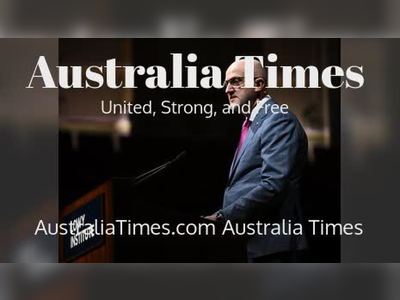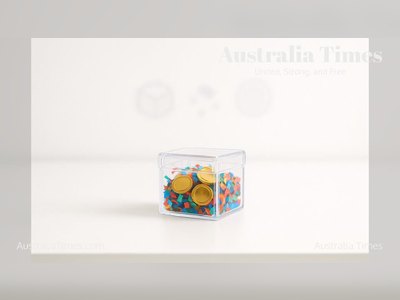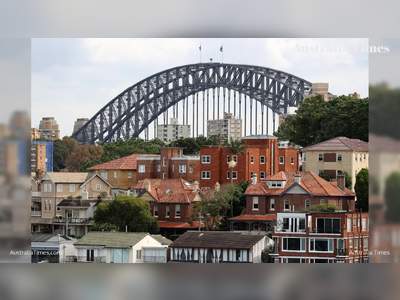Australia’s Economy Finds Itself in a ‘Pretty Good Spot’—but Risks Linger
Despite strong growth, resilient labour markets and easing inflation, the Reserve Bank of Australia warns of mounting housing and inflation pressures ahead
Australia’s economy has clawed its way back into what the central bank chief describes as a “pretty good spot” — a position of solidity after years of post-pandemic uncertainty.
With inflation slowing back into the policy band and unemployment remaining low, the country is now enjoying a period of strengthened momentum in consumer spending, housing and business activity.
Michele Bullock, Governor of the Reserve Bank of Australia (RBA), told a parliamentary committee that “we have got a good unemployment rate so far, we have got inflation back in the band.
We are in a pretty good spot.” This reflected household consumption rising, a resilient housing market and a labour market that remains historically tight.
Domestic inflation figures recently showed the trimmed-mean inflation rate near the top of the RBA’s two to three per cent target range.
Market observers note that the official cash rate, held at three point six per cent after three cuts earlier in the year, leaves room for policy adjustment if conditions change.
Yet, the strong state of the economy comes with caveats.
The RBA has flagged concerns that house prices and rental costs are now speeding up again, which could stoke inflationary impulses.
In the bank’s November policy statement, the board stressed that growth may already be stretching business capacity, driving price pressure from wages, services and housing.
A recent inflation uptick to around three per cent in underlying terms triggered a warning that the board was “not wedded religiously to a particular path” of rate cuts and may pause easing if risks materialise.
On the housing front, a robust recovery in home prices is supporting consumer confidence but also raises questions about sustainability and affordability.
Rent inflation is beginning to lift.
For an economy that has relied heavily on home-ownership as a pillar of consumer wealth, the interplay between housing strength and inflation represents a delicate balance.
If housing and rental costs accelerate too far, they could undermine real incomes and stir inflationary pressures once more.
With household spending still firm and unemployment hovering near the historic low of around four per cent, the RBA believes Australia has the flexibility to adjust policy, provided global trade and growth remain stable.
But global uncertainty, including weaker growth in China and potential trade-shock spillovers, remains a concern.
Economists caution that maintaining this favourable position requires vigilance: the bank’s forecasts now suggest inflation may edge up toward the ceiling of the target band rather than drop harmlessly to midpoint levels by 2027.
In short, Australia’s economic recovery — while not the roaring boom of the pre-Covid era — is sufficiently strong to ease underlying anxieties.
But the “pretty good spot” comes with caveats: rising housing cost pressures, the need to guard real incomes and a vigilant central bank ready to intervene if inflation resurfaces.
The next chapter will depend on translating momentum into sustained, balanced growth without tipping into overheating.
With inflation slowing back into the policy band and unemployment remaining low, the country is now enjoying a period of strengthened momentum in consumer spending, housing and business activity.
Michele Bullock, Governor of the Reserve Bank of Australia (RBA), told a parliamentary committee that “we have got a good unemployment rate so far, we have got inflation back in the band.
We are in a pretty good spot.” This reflected household consumption rising, a resilient housing market and a labour market that remains historically tight.
Domestic inflation figures recently showed the trimmed-mean inflation rate near the top of the RBA’s two to three per cent target range.
Market observers note that the official cash rate, held at three point six per cent after three cuts earlier in the year, leaves room for policy adjustment if conditions change.
Yet, the strong state of the economy comes with caveats.
The RBA has flagged concerns that house prices and rental costs are now speeding up again, which could stoke inflationary impulses.
In the bank’s November policy statement, the board stressed that growth may already be stretching business capacity, driving price pressure from wages, services and housing.
A recent inflation uptick to around three per cent in underlying terms triggered a warning that the board was “not wedded religiously to a particular path” of rate cuts and may pause easing if risks materialise.
On the housing front, a robust recovery in home prices is supporting consumer confidence but also raises questions about sustainability and affordability.
Rent inflation is beginning to lift.
For an economy that has relied heavily on home-ownership as a pillar of consumer wealth, the interplay between housing strength and inflation represents a delicate balance.
If housing and rental costs accelerate too far, they could undermine real incomes and stir inflationary pressures once more.
With household spending still firm and unemployment hovering near the historic low of around four per cent, the RBA believes Australia has the flexibility to adjust policy, provided global trade and growth remain stable.
But global uncertainty, including weaker growth in China and potential trade-shock spillovers, remains a concern.
Economists caution that maintaining this favourable position requires vigilance: the bank’s forecasts now suggest inflation may edge up toward the ceiling of the target band rather than drop harmlessly to midpoint levels by 2027.
In short, Australia’s economic recovery — while not the roaring boom of the pre-Covid era — is sufficiently strong to ease underlying anxieties.
But the “pretty good spot” comes with caveats: rising housing cost pressures, the need to guard real incomes and a vigilant central bank ready to intervene if inflation resurfaces.
The next chapter will depend on translating momentum into sustained, balanced growth without tipping into overheating.
AI Disclaimer: An advanced artificial intelligence (AI) system generated the content of this page on its own. This innovative technology conducts extensive research from a variety of reliable sources, performs rigorous fact-checking and verification, cleans up and balances biased or manipulated content, and presents a minimal factual summary that is just enough yet essential for you to function as an informed and educated citizen. Please keep in mind, however, that this system is an evolving technology, and as a result, the article may contain accidental inaccuracies or errors. We urge you to help us improve our site by reporting any inaccuracies you find using the "Contact Us" link at the bottom of this page. Your helpful feedback helps us improve our system and deliver more precise content. When you find an article of interest here, please look for the full and extensive coverage of this topic in traditional news sources, as they are written by professional journalists that we try to support, not replace. We appreciate your understanding and assistance.










